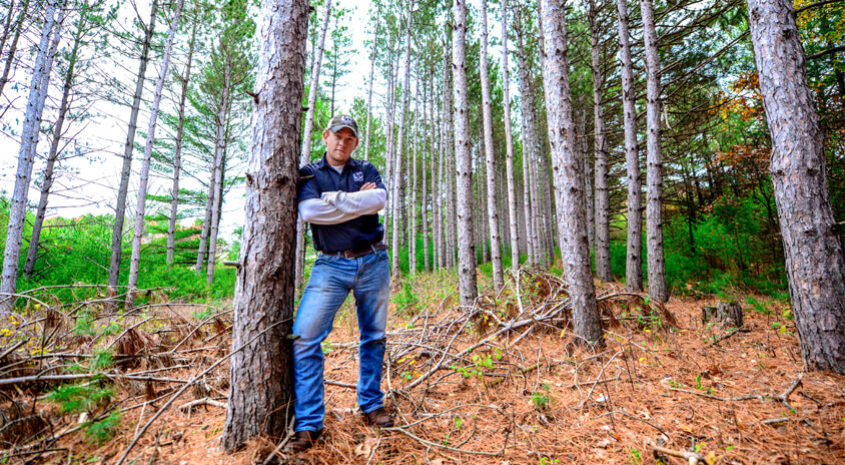Author: Marty Griepentrog
There are two fundamental ways that landowners can address timber management. You can either clear-cut for profit, or invest time and energy into sustainable forest thinning to promote increased big game herds and other wildlife. Keep in mind that never to two shall meet.
Clearing timber for profit does not factor in the aftermath of tree stumps as far as the eye can see. It’s more like a wildfire ravaged the land than environmental management. Sustainable timber cutting and habitat management practices — also known as “silviculture”— can deliver reasonable profits when landowners contract with loggers to cull specific trees. Such methods also provide significant returns in term of high-value hunting, angling and recreation use. Consider these timber harvesting concepts.
 Target Poor Growth Timber: A robust forest relies on its best trees succeeding. Keep the healthiest ones and make decisions about others.
Target Poor Growth Timber: A robust forest relies on its best trees succeeding. Keep the healthiest ones and make decisions about others.- Focus On Mid-Sized Timbers: It’s essential to allow the oldest, strongest trees to continue to flourish and provide ongoing seed. Don’t be persuaded by the lure of big money and hand over your ancient trees to loggers. Focus on mid-level growths and reasonable financial and land usage returns.
- Special Timbers: Species rely on forest diversity for their habitats. It’s important to understand that deer herds and other game are not the only considerations when culling timbers. Avoid taking down rare or unique trees whenever possible because they provide enhanced value to the habitat.
- Future Considerations: Leave diverse, desirable trees and saplings intact in order to benefit from generations of wildlife habitat excellence.
- Mark Trees For Cutting: When contracting with a logging outfit, mark the trees that you plan to sell or have taken down. This will avoid any communication issues that could result in unwelcome clear-cutting or loss of high-value trees.
- Land Management Plan: Property owners would be wise to work with an environmental management specialist that can help develop a plan that serves your long-term goals and promotes healthy forestation.
- Additional Resources: The U.S. Forest Service publishes information and guidance about sustainable forest management.
It’s important for property owners with valuable hunting lands to either master the art of silviculture or work with someone who specializes in the area of timber and wildlife habitat management. Logging outfits can offer considerable money for your eldest growths and rare timbers. But if your long-term goal is a target rich hunting ground, balanced timber harvests are advisable.



